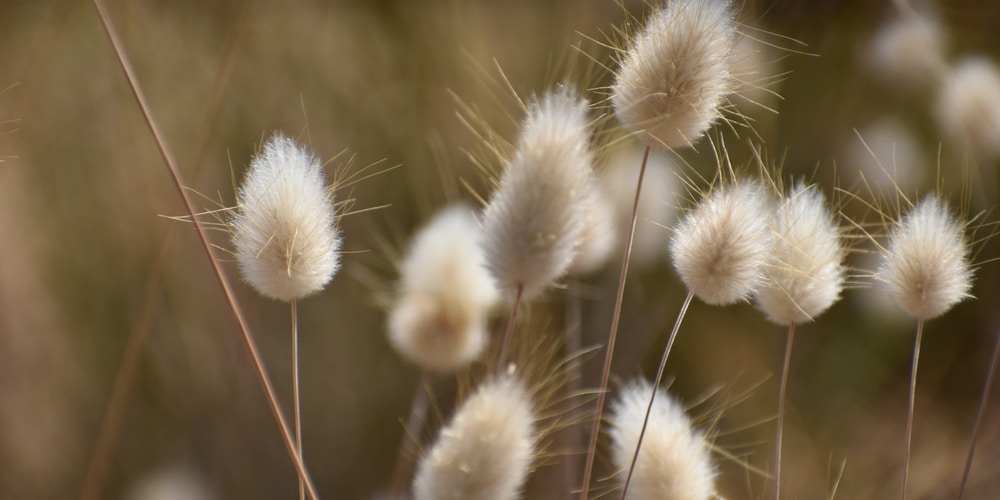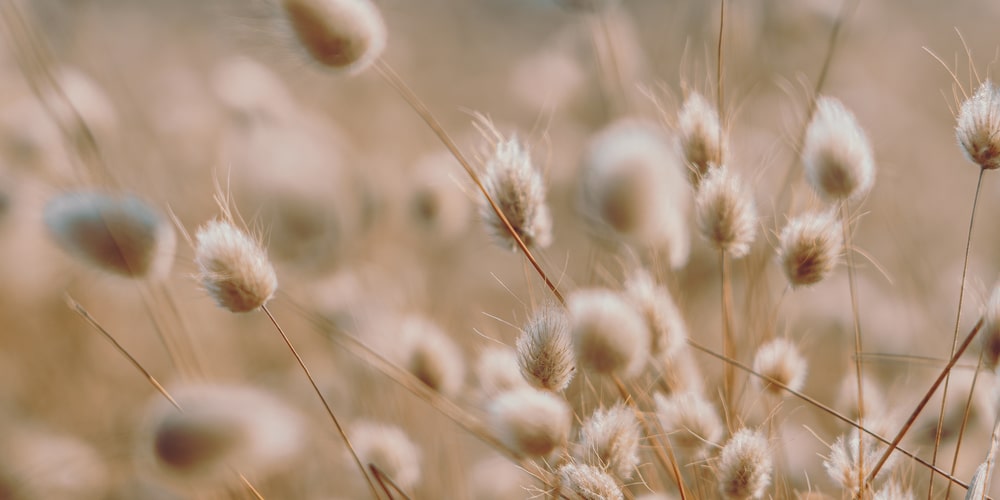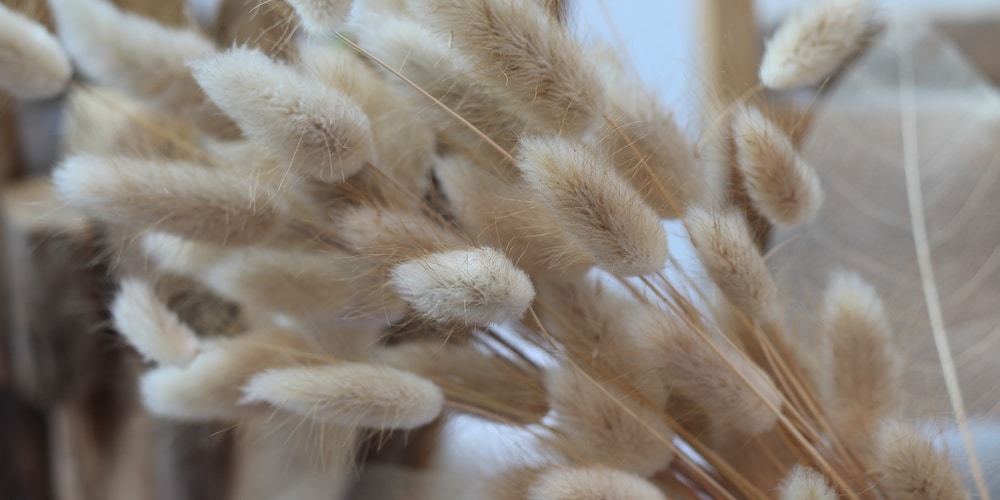Bunny tail grass, also known as Lagurus ovatus, is a type of flowering grass that is native to Mediterranean countries and has been widely cultivated for its attractive inflorescences. The grass gets its name from the small, round bunny-like “tails” that adorn the ends of the flower stems.
These puffball-like blooms are popular in dried arrangements, and they also make a beautiful addition to fresh bouquets. If you are thinking of adding this adorable bunch of bunnies to your garden, read on for everything you need to know about bunny tail grass care.

| Botanical Name | Lagurus ovatus |
| Common Name | Bunny Tail Grass |
| Plant Type | Annual |
| Flower Color | Light green, pale pink, and white |
| Size When Mature | 8 inches |
| Bloom Time | Late spring or early summer and last until fall |
| Sun Requirements | 6-8 hours Full Sun tolerates Partial Shade |
| USDA Hardiness Zones | 4-9 |
| Soil PH Range | 6.5 – 7.5 |
| Soil Type | Acidic, Neutral, and Alkaline. Prefers sandy and well-draining soil but can tolerate clay. |
| Water Needs | Low to Medium |
| Native Area | Mediterranean countries |
What You Need to Know About Bunny Tail Grass
Bunny tail grass is a relatively low-maintenance plant and is quite easy to grow. It is a low-growing plant that only reaches about 8 inches in height. The leaves of the plant are narrow and pale green in summer, turning to a golden-hued straw color in the fall.
The bunny tail grass flowers appear in late spring or early summer and last until fall. It blooms mesmerizing white or pale-pink flowers that are soft and fluffy to touch. It has borne on slender, erect stems that wave back and forth in the breeze, giving them a soft and ethereal look.
How to Care for Bunny Tail Grass
If you are charmed by the bunny tails and want to add this plant to your garden, here is what you need to know about caring for bunny tail grass:
Light
Bunny tail grass prefers full sun but will tolerate some shade. It thrives best with six to eight hours of direct sunlight per day. Sun exposure affects the color of the leaves, with those in the full sun being greener while those in the shade will have a more golden hue.
Water And Soil Needs
Like many ornamental types of grass, this grass is quite drought-tolerant once established. However, during the first growing season, you will need to water it regularly to help it get roots and stabilize. After that, it can rely on rainfall, but you may need to give it a deep watering every few weeks during periods of extended drought.
The water needs of this plant also depend on the soil. Make sure to assess your soil before planting and amend it as necessary. This will help you know when to water and how often.
Bunny tail grass prefers well-drained soil and grows best in sandy or gravelly soil that drains well. While it will grow in other types of soil like clay, it may be more susceptible to root rot if the soil is too heavy or does not drain well. It is not particular about soil pH and will do well in both acidic and alkaline soils.
Temperature Requirements
This sun-loving grass is hardy in USDA zones 4-9 and can withstand temperatures as low as -20 degrees Fahrenheit. It thrives in hot, dry conditions and is good for xeriscaping. While it can tolerate some shade, too much shade will cause the plant to become leggy and produce fewer flowers.
During the winter, the leaves of bunny tail grass will turn brown and die back. However, the plant itself is pretty hardy and will bounce back in the springtime.
Fertilizer
Bunny tail grass is a relatively light feeder and does not need a lot of fertilizer. If you wish to fertilize, do so in early spring with a balanced fertilizer such as 10-10-10. Be careful not to over-fertilize as this can lead to excessive growth that makes the plant leggy and floppy.
Common Diseases
Despite being appealing to humans, this plant is not particularly appealing to common diseases. However, like many other ornamental kinds of grass, it can be susceptible to rust, powdery mildew, and root rot if conditions are favorable for these diseases.
Fungal diseases might also occur in humid conditions or if the plant is stressed from too much or too little water. If you do notice any of these diseases, make sure to treat them early to prevent them from spreading.
Some pests that may bother bunny tail grass are aphids, earwigs, and grasshoppers. These pests are not usually serious enough to warrant treatment. Still, they can be controlled with insecticidal soap or neem oil if they become a problem.
Bunny Tail Grass Propagation
If you want to add more bunny tail grass to your garden or share some with friends, it is easy to propagate this plant. The easiest way to do this is by division in the springtime. You can also propagate from seed, but it can be a bit tricky and takes longer for the plants to mature.
To divide the plant, dig up the entire clump and pull it apart into smaller sections, making sure each section has a good root system. Give it at least six to twelve inches of space when replanting. You can then replant these sections in your garden or give them away.
Start the seeds indoors in late winter or early spring to propagate from seed. Sow the seeds on the surface of moistened potting mix and keep them at a 65-70 degrees Fahrenheit temperature until they germinate, which usually takes about two weeks.
Once they have sprouted, move them to a sunny spot and keep them moist. Seedlings will usually be ready to plant outdoors in late spring or early summer.
Bunny Tail Grass Care: Final Thoughts
Bunny tail grass is a beautiful annual ornamental grass that is easy to grow. With its attractive tufts of tails that are versatile enough to be used in a number of ways, fresh or dried, it is indeed a plant you’d love to have in your garden.
Keep in mind that even though this grass is easy to take care of, it still needs your time and attention, especially during its first growing season. After that, you can sit back and adore the versatile beauty it has to offer.
Related Article: How Long Can Grass Seed Go Without Water?

